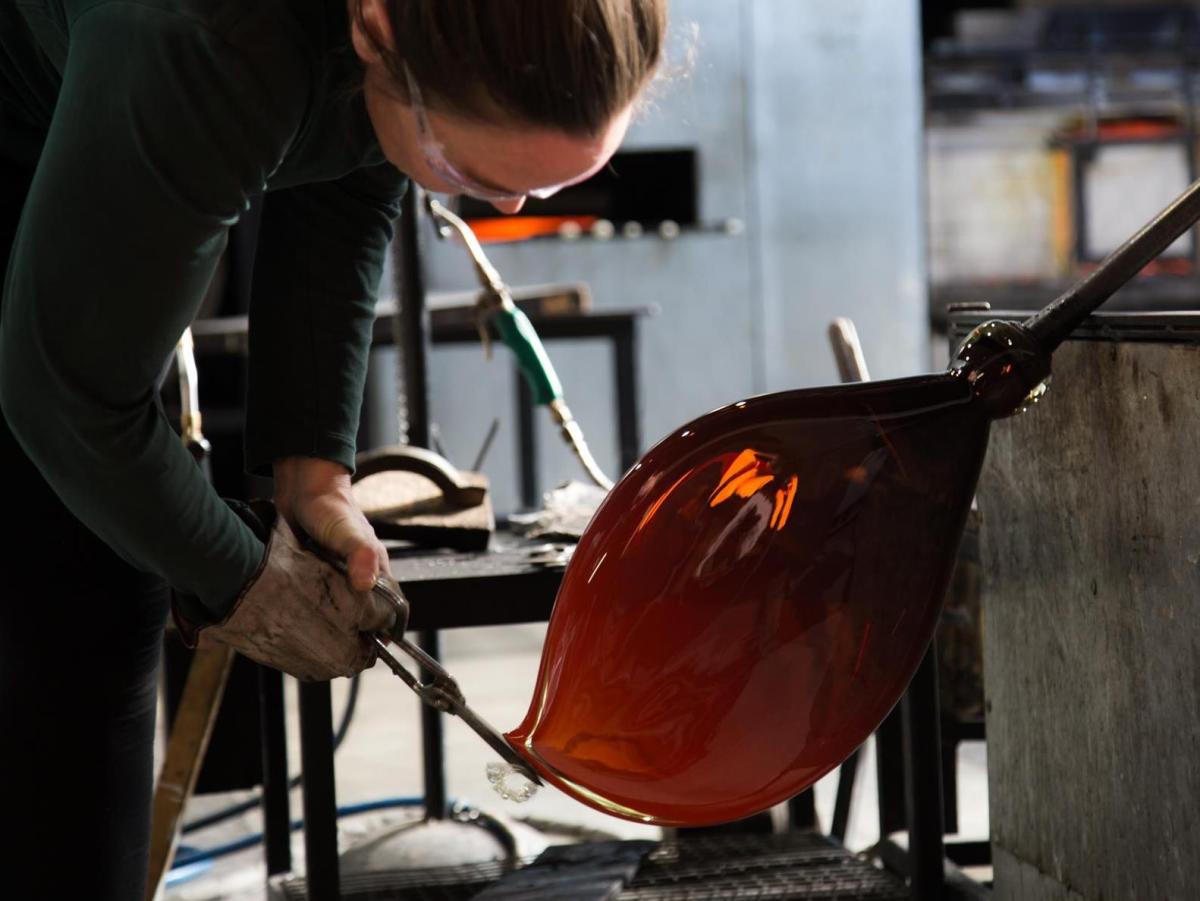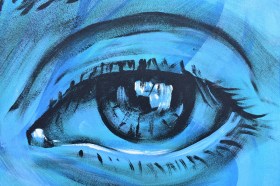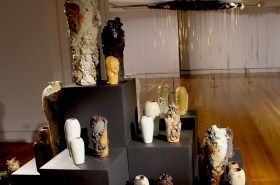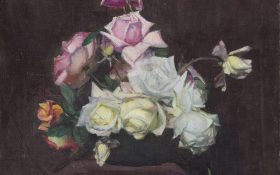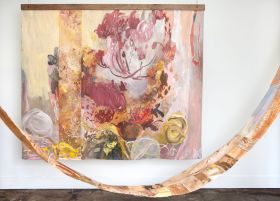Harriet Schwarzrock during her Art Group Creative Fellowship in 2017. Image supplied.
Contemporary Australian glass artists have received a positive reception overseas for decades, thanks in no small part to the efforts of internationally acclaimed artist, Klaus Moje AO.
Moje established the Glass Workshop at the Canberra School of Art (now known as the ANU School of Art and Design) in 1983, which set the standard of quality that has become a hallmark of graduates since, and played an important role in establishing Canberra’s international reputation as the home of glass art and artists in Australia.
This rich history of glass art in Canberra was supported by the strong culture of professional training available. But as more and more graduates found themselves having to move interstate or overseas to establish their careers, it became clear that the city needed more infrastructure to support the glass industry of the future. In response, the ACT Government provided $11 million in capital funding, resulting in the birth of Canberra Glassworks in 2007.
As Australia’s only contemporary arts centre dedicated to glass, Canberra Glassworks offers residencies and equipment and studio hire to artists, as well as workshops for the public. It is the largest open access facility for glassmaking in the Southern Hemisphere.
The local arts scene has thrived with this support and today the city is home to some of the most renowned Australian contemporary glass artists. But while these artists call Canberra home, international travel and networking is still an important part of their work.
As artist Kirstie Rea said, ‘We have always been encouraged to go out internationally – Klaus really encouraged us as students to travel, to go and see what was being done overseas; to have a look and bring back what you need to and keep working from there.’
To find out how these artists have built an international reputation, we speak to two former Art Group Creative Fellows.
Be persistent
‘The art world is a tough world. It’s a world where you put in hours and hours of work and sometimes wonder why you do it. But the rewards are that I love going to work each day. I love going to my studio, there’s always a smile on my face when I go,’ said Rea.
Persistence is key when it comes to developing an audience overseas, she explained. In her case, Rea made a conscious effort to travel, particularly to the United States, where she found opportunities to teach and show her work.
Her advice to emerging and early career artists is to develop contacts by traveling.
‘Just find the means to go, whether that means applying for some grant money or working extra hard, because it is amazing the contacts you make. You might go first as a student and you’ll love it as a student, and then you might go back as a teaching assistant and by then you will have made enough work to be showing and to be picked up by a gallery. But it is that persistence [that counts].’
It takes a village
While persistence and hard work will pay off, things are always easier when support is around – which is why improving creative infrastructure for artists is so important. While it might sound counter-intuitive, local support can help you build international connections and provide a strong base from which to work.
The example of Canberra Glassworks is testament to this. Artist Harriet Schwarzrock, who is based just outside Canberra with her husband and fellow artist Matthew Curtis, explained that artists can thrive locally with the right support.
‘When we first moved we set up our own studio, with considerable support and interest from our local Queanbeyan Council. Shortly thereafter The Canberra Glassworks was opened. This really has developed into quite a hub, for local and visiting artists,’ Schwarzrock said.
‘Although neither of us studied in Canberra, I really think that the legacy of both Klaus Moje and Stephen Proctor at the then School of Art has fostered incredible artists and careers, locally and internationally. It has provided an instant network of friends and colleagues to work with and to be part of a community.’
Schwarzrock also commented on the international opportunities that present themselves in local areas where the arts are supported.
‘The Canberra Glassworks has provided opportunities to develop new skills. Attending workshops led by international visiting artists, has also led to international connections and opportunities,’ she said.
Learn more about Canberra Glassworks at canberraglassworks.com.
